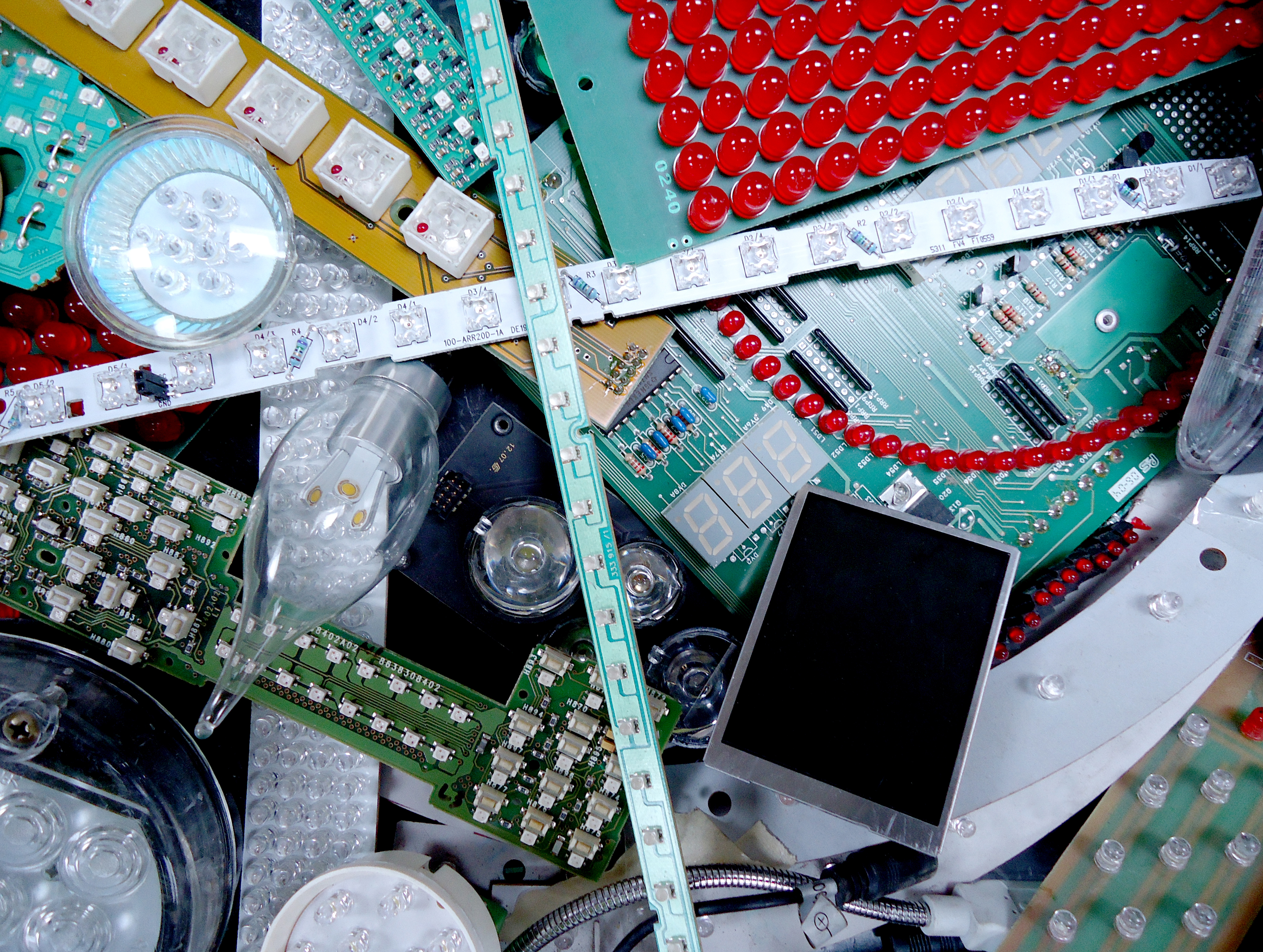New horizons for LED products
Although light emitting diodes (LEDs) are energy-efficient and contain no mercury, they do rely on scarce resources. Improving this technology was the goal of cycLED (Cycling of Resources Embedded in Systems Containing Light Emitting Diodes), one of several Fraunhofer Institute for Reliability and Microintegration projects completed last year. Research and industry joined forces in the collaborative project to increase the lifetime of LED products, reduce resource consumption and improve recycling.
Street lights start their work when the sun goes down. Often they not only throw light on asphalt, but also shine into the bedrooms of residents - an annoyance for light sleepers. Intelligent lighting is one way of ensuring street lights no longer ruin a good night’s sleep. For example, street lighting equipped with motion detectors only brightens when passing cars or pedestrians are detected and only the area of the movement detected is illuminated. When not needed, the light can be programmed to either darken completely in sleep mode or just be dimmed. This type of street light was one of four demonstrators developed in the cycLED project. The project focused on LED products, or more precisely, products that contain LEDs. Energy-efficient and low emission LEDs have largely replaced the now banned traditional light bulb.
Making the most of light
Initiated by Fraunhofer IZM scientists, the project aimed to optimize the lifetime of LED products and improve recycling. Design, construction, material and recycling technology were key aspects of the work. One advance came from Spanish project participant ONA - a lamp made of recycled plastic and with a modular design to allow fast disassembly for repair and recycling. The Swabian company RIVA LIGHTING developed a lamp that led to an entirely new business model: lighting rental for industrial spaces. Instead of buying the lamp, companies rent the product and pay only for the illumination. In case of failure, the lamp is repaired or replaced by the manufacturer. “It marks a radical turn-around in the product market, because the manufacturer’s profits are directly tied to the lifetime and energy efficiency of the product.” explains Otmar Deubzer, Fraunhofer IZM scientist and cycLED project leader. A massive aluminum cooling body helps meet the goal of long lifetime by keeping the temperature inside the lamp low enough to prevent overheating. In Deubzer’s opinion this may very well see the lamp reach its predicted lifetime of some 60 000 hours. The fact that the cooling body can be reused through several products cycles reduces the environmental impact associated with its manufacture enormously.
Conserving resources
“In terms of recycling, all demonstrator designs prioritized separating the LED chips from the aluminum cooling bodies and the rest of the lamp.” says Deubzer. Not only do the LED chips contain precious metals, but their surfaces also carry so-called converters - mixtures - that convert the blue light into white light. The converters contain valuable resources like the rare earth elements lutetium und yttrium. If the LED chips cannot be separated from the aluminum cooling body, either the precious metals and the rare earth elements or the aluminum are lost. Ensuring the recycling of all three was one goal of the project. One question that the scientists pursued was how the rare earth elements could be concentrated to make subsequent recycling possible without interfering with established recycling paths for environmentally and economically vital precious metals. Here, the cycLED consortium called on a patent from the Fraunhofer Institute for Process Engineering and Packaging IVV. Using Fraunhofer IVV’s solvent-based recycling process CreaSolv, the cycLED project partners were able to separate the converter from the LED chips and then concentrate the rare earth elements. However, it has yet to be proven that this makes recycling the rare earth elements possible.
Separating the LED chips for the body of the LED product is a prerequisite for applying the CreaSolv process effectively. However, it is only suitable for products that can be cost-efficiently recycled despite the expense of manual disassembly and which contain extremely expensive rare earth elements like lutetium. Mechanical separation of LED chips and recycling rare earth elements from detached converters is a goal of future development.
In the end, the most effective means of conserving resources is not needing them in the first place, as the street light demonstrator by project partner BRAUN elegantly proved. Using just six high-power LED chips, the lamp requires 50 times less rare earth elements than similar products with equal or inferior lighting power. “The best available technology allowed us to reduce the amount of resources without impairing product performance.” explains Janis Winzer from Fraunhofer IZM’s Environmental & Reliability Engineering Department. A truly effective means of conserving resources.
Last modified:
 Fraunhofer Institute for Reliability and Microintegration IZM
Fraunhofer Institute for Reliability and Microintegration IZM